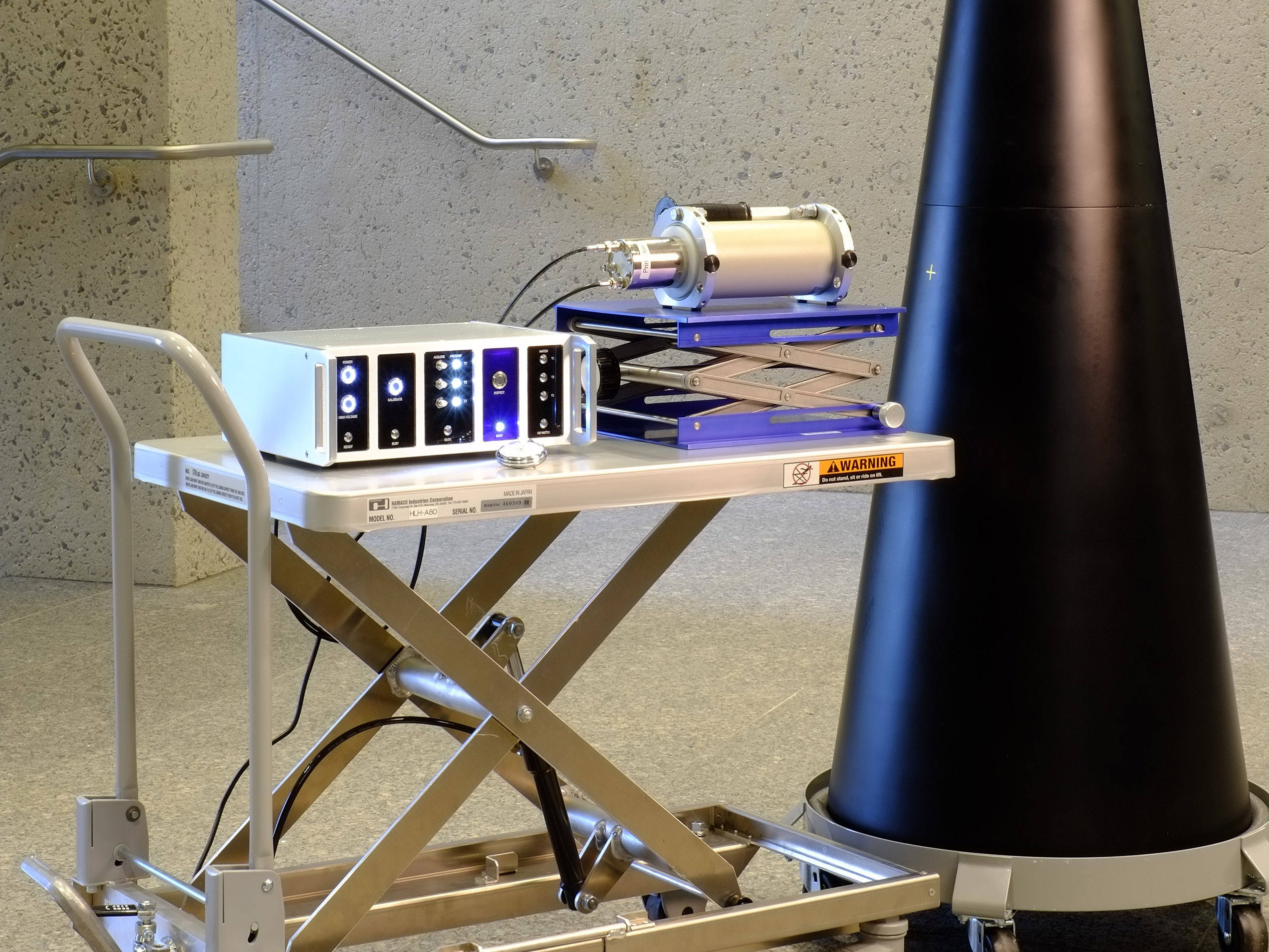The Information Barrier Experimental (IBX), based on the Red Pitaya Platform, uses low-resolution gamma spectrometry and a template-matching approach for nuclear verification applications.
Making trusted measurements on nuclear warheads to confirm their authenticity without revealing design information remains one of the major challenges for nuclear verification.
Over the years, a number of prototype information barriers have been developed in the United States, as part of the UK-Norway Initiative, and for the Trilateral Initiative between Russia, the United States, and the IAEA. These devices display the results of a sensitive measurement in a simple pass/fail manner, and they have relied on a variety of measurement techniques and technology choices. So far, no common design approach has emerged among developers, impeding faster progress in this important area of research. In particular, as experts have previously argued, “we should work towards creating a more authenticatable, certifiable, and inspectable computer for arms control and nonproliferation regimes.”
In an effort to help overcome this shortcoming, we develop the prototype Information Barrier Experimental (IBX) based on a particularly versatile single-board computer, the Red Pitaya platform. IBX’s design is simple and transparent. The main objective is to provide a basis for a low-cost prototyping platform that could be used by others for a variety of verification applications and therefore enable a cross-comparison of approaches and results, working toward a common platform for a variety of applications in nuclear verification.
The IBX uses low-resolution gamma spectrometry for possible nuclear verification applications. The device is based on the template-matching approach, in which the radiation signature from an inspected item is compared against a template from a trusted reference item. It can serve as a platform to test different algorithms for comparison of two radiation spectra.
To determine the performance of the IBX in an inspection setting, we have conducted a measurement campaign with kilogram-quantities of special nuclear material at the Device Assembly Facility (DAF) in Nevada. The measurement results are very encouraging as we achieve excellent detector resolution and the capability to detect small differences in radiation spectra, demonstrating the basic viability of the approach.
We envision the IBX (or a similar system) to be used by a diverse group of experts from different fields to examine hardware and software vulnerabilities and to explore strategies to address them. In particular, we hope devices such as the IBX can support future verification challenges similar to the Underhanded-C Contest, which in 2015 focused on the software of a hypothetical information barrier.
The costs of the device add up to about $700, with the most expensive parts being the Red Pitaya ($260) and the high-voltage module ($140-220). In principle, a kit could be made available to facilitate broader adoption and reach a diverse audience to work on the remaining verification challenges for nuclear arms control and disarmament.
More to explore:
- G. White, Trends in Hardware Authentication, 56th Annual Meeting of the Institute for Nuclear Materials Management, Indian Wells, CA, 2015.
- M. Kütt, M. Göttsche, and A. Glaser, Information Barrier Experimental: Toward a Trusted and Open-source Computing Platform for Nuclear Warhead Verification, Measurement, Volume 114, 2018, pp. 185-190.
- M. Kütt, M. Göttsche, and A. Glaser, Disarmament Hacking 2.0: Toward a Trusted, Open-Hardware Computing Platform for Nuclear Warhead Verification, 57th Annual Meeting of the Institute for Nuclear Materials Management, Atlanta, Georgia, 2016.
- M. Göttsche and A. Glaser, Low-resolution Gamma-ray Spectrometry for an Information Barrier Based on the Template-Matching Approach, 57th Annual Meeting of the Institute for Nuclear Materials Management, Atlanta, Georgia, 2016.
- M. Kütt, S. Philippe, and A. Glaser, Leveraging the Wisdom of the Crowd: Hardware and Software Challenges for Nuclear Disarmament Verification, 56th Annual Meeting of the Institute for Nuclear Materials Management, Indian Wells, CA, 2015.
